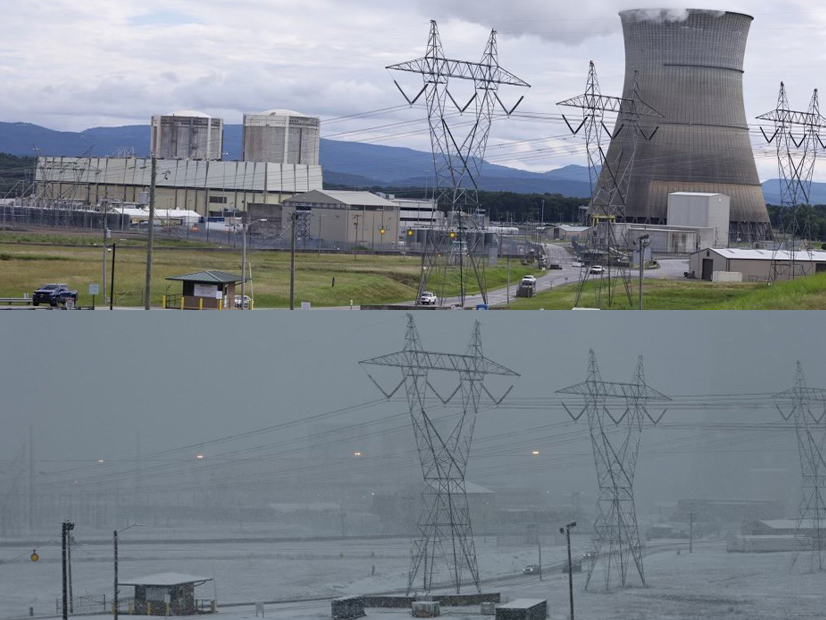
NEW ORLEANS — MISO’s annual winter lookback focused almost exclusively on operations during the widespread Dec. 23 deep freeze, with staff vowing to work on emergency coordination with their neighbors and digging into why the RTO was asked to shrink flows on its Midwest-South transmission transfer.
“So, a difficult quarter,” MISO Independent Market Monitor David Patton said as he began his postmortem before the Board of Directors’ Markets Committee March 21.
Patton said had it not been for the winter storm, real-time energy prices would have been down 11% year-over-year. Instead, they were up by 15% at $47.60/MWh.
Jessica Lucas, executive director of system operations, joked that Winter Storm Elliott was “the Christmas gift that no one wanted.” She said if the storm had lasted two full days, its “impacts could have been much more severe.”
Lucas said MISO consistently exported power to southern neighbors, including emergency energy to Tennessee Valley Authority, and complied with requests to reduce its Midwest-South transfers by 1,500 MW. The grid operator typically flows 3,000 MW south and 2,500 MW midwest over the connection.
MISO went into Dec. 23 with19 GW of unplanned outages from the day before. The grid operator was forced to call a maximum generation event, calling up emergency resources as it also exported energy to neighbors. (See MISO Defends Energy Exports During December Storm; MISO Data Show Steep Gas-fired Outages During Winter Storm.)
Lucas said fuel issues played a significant role in gas-fired generation outages, with multiple units unable to start. She also said the gas market was on holiday, complicating matters and preventing generation owners from buying additional fuel. She said “strong wind performance” kept operations afloat.
“MISO maintained reliability across the footprint with no interruptions,” she said.
When asked how operations performed during the storm, Renuka Chatterjee, vice president of operations, said the phrase that comes to mind is “dodging a bullet.”
“The only difference between this and Winter Storm Uri was the wind output,” she said.
Patton said it’s “boggling” that gas markets are allowed to close for weekends and holidays.
“The fact that gas doesn’t trade on a weekend is hard to understand … We can’t shut our markets down on a weekend,” he said.
Patton said MISO lost two 1 GW generators on either side of the regional connection almost simultaneously as the RTO’s neighbors asked it to dial down the transfer constraint’s flows.
Lingering Questions on Transfer Reduction
Patton said MISO needs to understand why its neighbors needed the transfer’s cutback.
“We’ve been asking our neighbors about the situation to cut, and we haven’t heard anything,” Patton said. He added, “This has nothing to do with MISO’s shortcomings.”
He said with more information from its neighbors, the RTO might be able to manually redispatch generation before taking more dramatic steps.
Patton said the many gas generation outages from units without backup fuel shows the importance of MISO accrediting capacity on the margins. He said a marginal aspect in capacity accreditation isn’t meant to single out only renewable generation. (See MISO Accreditation Impasse Persists at Workshop.)
JOAs with Neighboring Systems?
Patton also said the “massive exports or wheels through MISO” during the storm means the grid operator should more clearly define how it expects its control room staff to react during widespread emergencies in the Eastern Interconnection.
He said the RTO and its neighbors need joint operating agreements that “specify what you can expect from us and specify what we can expect from them.”
“Typically, you should never shed load to protect non-firm exports,” Patton told the board.
Less than a month earlier, Patton advocated that the system operator sign JOAs with its neighbors. He said procedures should cover a “slew of deliveries” that operators can take in risky situations.
“I’m shocked that NERC doesn’t require RTOs to have joint operating agreements across all the major seams,” he said during the Gulf Coast Power Association’s MISO/SPP conference in early March.
Patton said some MISO market participants will see bills reaching “tens of millions” because of prices during the storm, partly because of its actions to help its neighbors.
“When you don’t have joint operating agreements … it’s really hard to see good interregional collaboration on a forward, or a planning basis,” he said.
Jennifer Curran, senior vice president of planning and operations, agreed that MISO and neighboring systems should determine coordination frameworks.
Director Robert Lurie said it was “interesting” that the RTO was able to keep exporting power while in emergency procedures. He said the storm shows the importance of interregional flows and managing constraints.
“First, I want to say that all things considered, you did a remarkable job,” Director Phyllis Currie told executives.
She asked whether staff could collaborate with its neighbors before facing emergency procedures. Chatterjee said they held a conference call with PJM soon after the storm and that it is interested in creating a specialty market product with MISO for use during emergencies.
Southern Renewable Energy Association’ executive director, Simon Mahan, said Winter Storm Elliott showed that fossil fuel generation “is just as susceptible to the weather as wind energy or solar energy.”
Mahan said MISO’s exports during the storm indicates that the grid operator should redouble its efforts to plan interregional transmission.
Under “blue sky” conditions, he said, sturdier interregional links are a more efficient way to operate the Eastern Interconnection.
“Those same connections are literally a lifeline in extreme weather events. MISO needs to work with its neighbors to expand its regional transmission planning efforts outside of MISO and better connect MISO North with MISO South,” Mahan argued. “It can probably be said, and without exaggeration, that MISO’s actions saved lives during Winter Storm Elliott. But it still wasn’t enough to completely prevent the blackouts [in Duke Carolinas’ territory and TVA].”
Mahan said grid planners can underestimate the value of interregional transmission “because we don’t have a perfect way to calculate the true value of a warm meal or a hot shower.”


